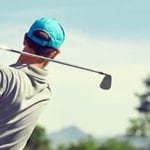
If you experience pain from Tennis & Golfer’s Elbow, let LA Orthopedic Group help.
Joints, muscles, and tendons in and around the elbow are susceptible to injury from repetitive movements. While such injuries are common among athletes, anyone can develop pain around the elbow from overuse or strain.
- Two of the most common conditions affecting this area are tennis elbow (lateral epicondylitis) and golfer’s elbow (medial epicondylitis)
- Tennis elbow results in pain felt on the outside of the elbow
- Golfer’s elbow affects the inside of the elbow
CONTACT US TODAY
What Causes Tennis and Golfer’s Elbow
Both conditions involve pain triggered by inflammation affecting the tendons that connect the forearm to the elbow and both are considered forms of elbow tendonitis. Specifically, tennis elbow affects tendons on the outside of the elbow that are linked to muscles that allow fingers to straighten and the wrist to bend backwards. Golfer’s elbow affects tendons on the inside of the elbow that help fingers grip and the wrist flex. Both injuries are caused by overuse, strain, or irritation of tendons connecting to the elbow. Contributing factors may include:
- Improper technique or form
- Stress on the forearm muscles
- Occupation-related movements
- Repetitive motions from activities like raking or playing musical instruments


Common Symptoms
Symptoms of both conditions are similar, but felt on opposite side of the elbow or arm. Discomfort often starts off mild and gradually progresses. The pain may become chronic and reach a point where touching the elbow becomes painful.
Tennis elbow may result in pain radiating from the outside of the elbow to the forearm, tenderness on the outside of the elbow, a weak grip, or pain triggered when trying to make a backhand stroke while playing tennis.
Tenderness or pain on the inside of the elbow that sometimes radiates down the arm may be experienced with golfer’s elbow. Additional symptoms might include weakness in the wrist or hand, tingling sensations or numbness felt in the little fingers, or pain when trying to grip something.
Diagnosis
The specific condition affecting the elbow can usually be determined by where symptoms are felt. Pressure may be applied to the elbow to further detect which tendon is affected. An X-ray or MRI is sometimes performed to rule out arthritis or a fracture as possible sources of elbow pain.
Potential Treatments
Initial efforts typically include taking a break from the activities or movements that seem to trigger pain and the use of over-the-counter pain-relievers and anti-inflammatory medications. Additional treatments may involve:
- Bracing, splinting, or athletic taping
- Physical therapy that includes stretching and muscle strengthening exercises
- Steroid injections
- Platelet-rich plasma injections
Surgery
Surgery is rarely necessary for tennis or golfer’s elbow. If surgery is performed, it’s usually a minimally invasive procedure that corrects issues with the affected tendon or a related problem with the elbow joint.
You may be referred to an orthopedic surgeon if your elbow pain has become chronic (lasing 4-6 months or more) or the pain experienced is severe and not going away with initial treatment efforts. Both tennis and golfer’s elbow may be prevented by minimizing repetitive motions as much as possible. If you do experience elbow pain, rest for a few days and apply ice to the affected area for about 10-15 minutes at a time.




